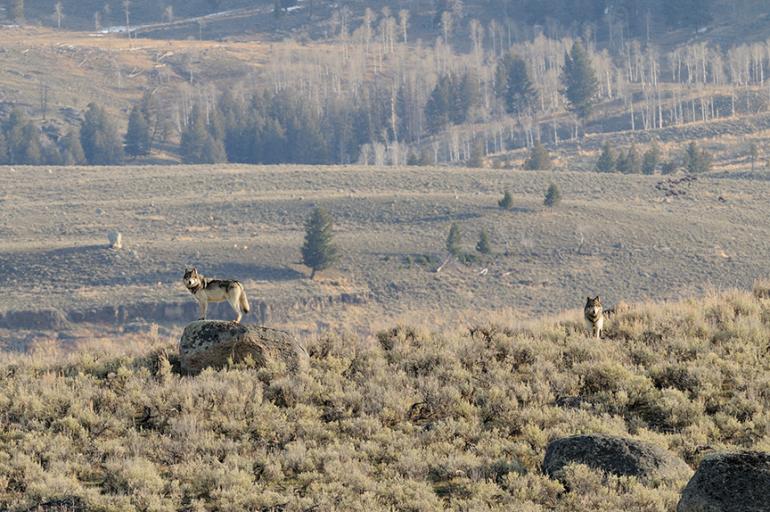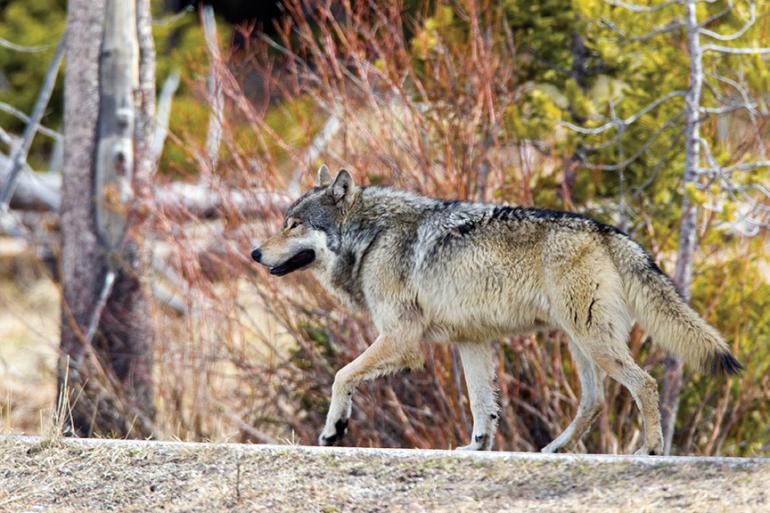Counting Wolves
Montana's wolf population explained.
Wolves, as many of our hunters learn, can be hard to find even when you’re looking for them. They’re smart, elusive animals that can travel great distances in a short time. And that’s just part of the challenge when it comes to estimating their population. There are always going to be those you see, and those you don’t. So how does Montana Fish, Wildlife & Parks put a number on it? Let’s take a closer look.
Monitoring
FWP wolf biologists and technicians use a variety of methods to estimate our wolf population. They monitor (or count) wolves on a year-round basis. It’s a combination of tracking collared animals from the air or spotting them on the ground with spotting scopes or binoculars. It also means using trail cameras and the evidence provided by tracks, scat, and howling, as well as taking into account reported sightings by the public.
Within those numbers, FWP must also determine the number of breeding pairs in the state (an adult male and female that have produced at least two surviving pups) because if that number drops to below ten breeding pairs, wolves would be relisted under the Endangered Species Act. You’ll see later that we’re far from that.
The results of these wolf counts, in concert with reports of hunter and trapper harvest, livestock conflict removals, and documented wolf deaths (natural or accidental), help determine the statewide minimum wolf population. It’s called the minimum because we know that we are unable to account precisely for all wolves in the state. However, this number has been used since the 1980s and provides a baseline for wildlife managers in their decision-making related to wolves. Actual numbers are estimated to be 27 to 37 percent higher.
The Annual Report
The minimum wolf population is documented in the Annual Report (typically released each April), which takes into account a calendar year’s worth of information related to wolves. Its reported findings reflect what our wolf experts believe the minimum wolf population to be on Dec. 31 of a given year.
At the end of 2014, the minimum count was 554 (a decrease of 73 wolves, or 12 percent, from the year before). Our teams also verified 134 packs and 34 breeding pairs. In northwest Montana we counted 338 wolves. In western Montana, we counted 94 wolves. And in southwest Montana, the count increased to 122 (from 92 in 2013).
Less Conflict
Of particular note in the 2014 Annual Report was the significant drop in livestock losses due to wolves. Information from USDA-Wildlife Services confirms the number fell from 78 in 2013 to 42 in 2014. That is the lowest number of incidents related to wolf depredation in the last seven years. That number means fewer wolves had to be lethally removed through conflict-response actions. The report attributes the decline in wolf conflict to a couple of likely factors: more aggressive and targeted control in response to incidents, and legal wolf harvest.
Harvest (Hunting and Trapping of Wolves) and Other Factors
Hunters and trappers killed 213 wolves in 2014 (the calendar year, not the wolf season) as compared to 231 in 2013. There were 69 other documented mortalities, including lethal control removals, vehicle collisions, and illegal kills.
Andrea Jones is the FWP Region 3 information and education program manager.












